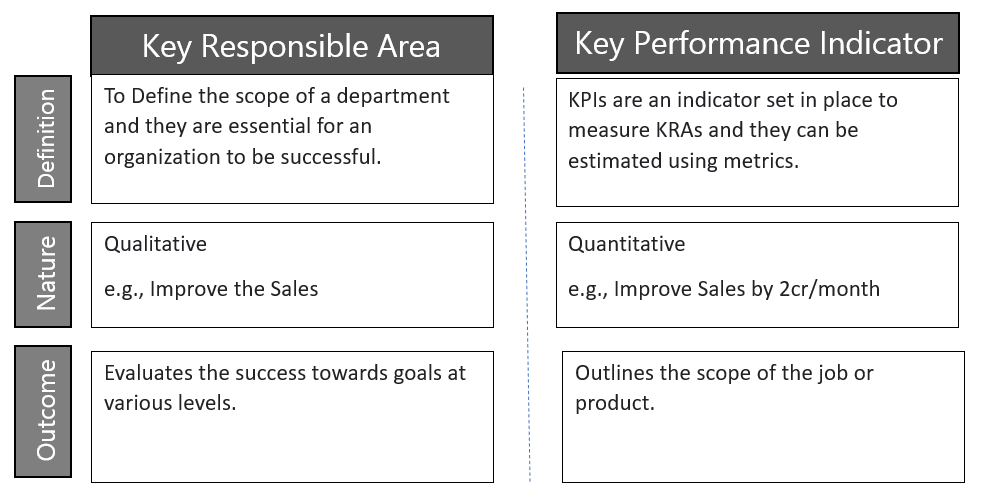KRA/KPI – The way of measuring your business

When it comes to measuring success, then KPI and KRA are two key measurable values that help business owners to measure their success and progress.
Measuring growth and goals is considered one of the most important activities of a business. Measuring and tracking success is important because it gives you a clear picture of your journey: Where you are right now, where you are going, how soon can you reach it, and who will help you reach your destination.
Businesses that don’t measure the growth and performance of their employees are often diverted from their primary goals and end up wasting time and resources which could otherwise have been utilized for their success. When it comes to measuring success, then KPI and KRA are two key measurable values that help business owners to gauge their success and progress. KRA is Key Result Area or also known as the Key Responsibility Area and KPI is Key Performance Indicators.
We will share the key performance indicators for employees, and the difference between KPI and KRA, which every business owner should be aware of.
But first, let’s understand these terms: What is KPI and KRA?
What is KPI or Key Performance Indicators?
KPIs are quantifiable and measurable values, which are used to evaluate and measure the success of a company or employees. Depending upon the business objectives, KPIs for different companies and organizations can be different, and unique.
For example, KPIs for a manufacturing firm can be daily production count and utilization resources. At the same time, KPIs for a cinema theatre can be customer satisfaction and the number of non-empty seats in the auditorium at any given time.
What is KRA or Key Responsibility Area?
KRA or Key Responsibility Area are quantifiable and measurable tasks and responsibilities for employees in an organization. Depending on the job profile, experience and expectations, different employees can have different KRAs within the same company.
For example, KRA for a sales manager can be the total number of sales in a quarter, while KRA for an HR Manager can be attrition rate and employee satisfaction.
Difference Between KPI and KRA

Types of Key Performance Indicators
When it comes to an organization, then profit is the most critical metric to gauge the success or failure, over a period of time.
Against this backdrop, the key performance indicators for an organization are:
- Revenue Growth: Tracking revenues from one period of time to the other is an important metric to monitor, and thus, included in the list of key performance indicators for the company.
- Income Sources: Companies can calculate revenue per client, revenues per unit of product sold, and more to find out the true picture of the growth of a company.
- Profitability Over Time: What is the profitability ratio over time, vis-a-vis revenues and expenses. If profitability is reduced, then how can you increase it? Should cost-cutting be a solution?
- Working Capital: Working capital is the funds needed to carry on the day-to-day activities and business operations of a company.
Key Performance Indicators for Employees
When it comes to finding out the key performance indicators for employees, then these factors can be considered, depending on the business objectives and goals:
- Customer Service
- Communication
- Job Departments
- Teamwork
- Performance of individual
To find out the right metrics, and to start monitoring them, you need expert guidance from someone (Consultants) who has working history with employees, organizations, projects and optimized them as well.
Article by Ravi Nashit.

